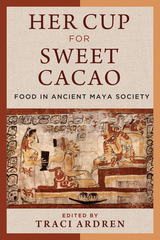
Social Identities in the Classic Maya Northern Lowlands
Gender, Age, Memory, and Place
Using new archaeological data from four major cities of the Classic Maya world, this book explores how gender, age, familial and community memories, and the experience of living in an urban setting interacted to form social identities.
Social Identities in the Classic Maya Northern Lowlands plumbs the archaeological record for what it can reveal about the creation of personal and communal identities in the Maya world. Using new primary data from her excavations at the sites of Yaxuna, Chunchucmil, and Xuenkal, and new analysis of data from Dzibilchaltun in Yucatan, Mexico, Traci Ardren presents a series of case studies in how social identities were created, shared, and manipulated among the lowland Maya.
Ardren argues that the interacting factors of gender, age, familial and community memories, and the experience of living in an urban setting were some of the key aspects of Maya identities. She demonstrates that domestic and civic spaces were shaped by gender-specific behaviors to communicate and reinforce gendered ideals. Ardren discusses how child burials disclose a sustained pattern of reverence for the potential of childhood and the power of certain children to mediate ancestral power. She shows how small shrines built a century after Yaxuna was largely abandoned indicate that its remaining residents used memory to reenvision their city during a time of cultural reinvention. And Ardren explains how Chunchucmil’s physical layout of houses, plazas, and surrounding environment denotes that its occupants shared an urban identity centered in the movement of trade goods and economic exchange. Viewing this evidence through the lens of the social imaginary and other recent social theory, Ardren demonstrates that material culture and its circulations are an integral part of the discourse about social identity and group membership.
A highly insightful and theoretically sophisticated book. . . . Ardren’s book would be an excellent resource in the classroom.
Acknowledgments
Chapter 1: Social Imaginaries and the Construction of Classic Maya Identities
Chapter 2: Circulations and the Urban Imaginary of Chunchucmil
Chapter 3: Memory, Reinvention, and the Social Imaginary of Later Yaxuna
Chapter 4: Burial Rituals and the Social Imaginary of Childhood
Chapter 5: Gendered Imaginaries and Architectural Space
Chapter 6: Why Social Identities?
References Cited
Index









